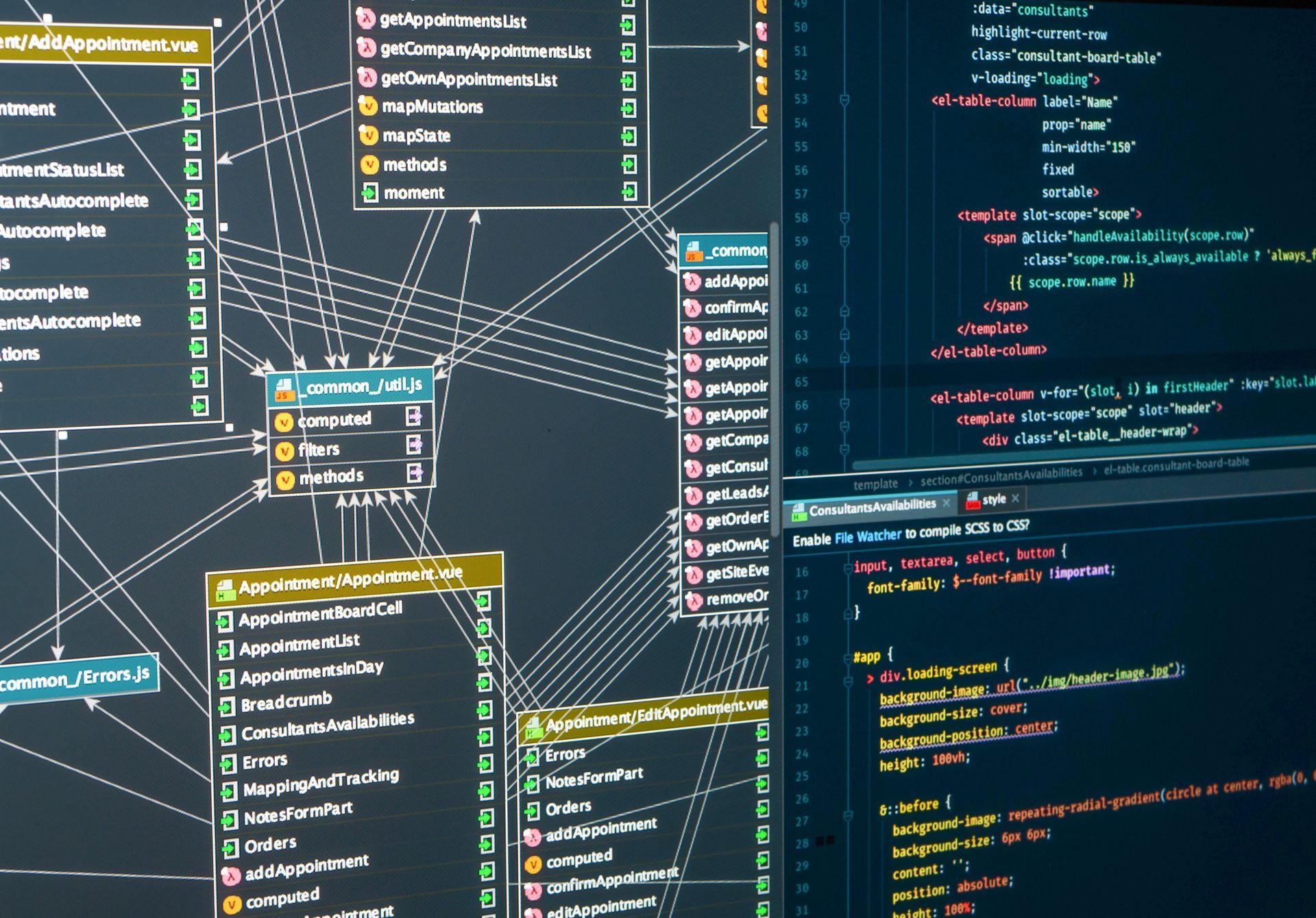Navigating the Data World: A Comprehensive Guide to the Differences between OLAP and OLTP

Modern businesses need powerful and efficient ways to store, process, and analyze their data. Two popular types of database systems, Online Analytical Processing (OLAP) and Online Transactional Processing (OLTP) have emerged as top choices for handling different types of data workloads.
But what exactly are OLAP and OLTP, and how do they differ? Understanding the key differences between these systems is crucial to making informed decisions about your business’s data management needs.
This guide covers the basics of OLAP and OLTP, highlighting their key differences and providing guidance on choosing the right system for your business.
Basics of OLAP (Online Analytical Processing)
OLAP is a powerful database technology designed for handling complex analytical queries and data manipulation tasks. It is particularly well-suited for situations where you need to analyze large amounts of data from multiple sources to uncover trends, patterns, and insights.
Some typical applications of OLAP systems include financial reporting, sales forecasting, and customer behavior analysis. These systems are built around a multidimensional data model, which allows you to view data from different perspectives, such as product categories, time periods, or geographical regions.
This flexibility enables you to dive deep into your data and perform advanced calculations, such as finding the average sales per region over a specific time period.
OLAP systems are also known for their ability to store and manage aggregate data, which is a summarized version of the detailed data in your database. By working with aggregate data, OLAP systems can speed up query performance and enable you to analyze historical trends and long-term patterns in your data.
Basics of OLTP (Online Transactional Processing)
OLTP systems, on the other hand, are designed to handle real-time transactional data processing. These systems are typically used for applications like order processing, inventory management, and customer relationship management, where quick and accurate data processing is essential.
OLTP systems use a relational data model, which organizes data in tables with rows and columns. This structure allows for efficient processing of simple, transactional queries, such as adding a new customer record or updating an inventory item’s stock level.
The primary goal of OLTP systems is to maintain data integrity and ensure that transactions are completed accurately and quickly.
Key Differences between OLAP and OLTP
Understanding the fundamental
differences between OLAP and OLTP systems is crucial for making informed decisions about your business’s
data management needs. Let’s explore their key distinctions:
1. Data Storage and Organization
OLAP systems use a multidimensional data model, which enables flexible data analysis and complex calculations. This model allows you to view data from different perspectives, such as product categories, time periods, or geographical regions.
In contrast, OLTP systems employ a relational data model that focuses on efficient processing of simple transactions. This structure organizes data in tables with rows and columns, enabling quick and accurate transaction processing.
2. Query and Transaction Types
OLAP systems are designed to handle complex analytical queries, which often involve calculations across multiple dimensions and data sources. These systems excel in situations where you need to analyze large amounts of data to uncover trends, patterns, and insights.
On the other hand, OLTP systems prioritize speed and accuracy in processing simple transactional queries, such as adding a new customer record or updating an inventory item’s stock level.
3. Performance Considerations
When it comes to performance, OLAP systems are optimized for read-heavy workloads, as they typically involve data analysis and reporting tasks.
Conversely, OLTP systems are geared towards write-heavy workloads, as they primarily deal with data entry and updates. This optimization ensures that each system performs efficiently based on its intended use case.
4. Data Scope and Historical Context
OLAP systems store and manage aggregate data, which is a summarized version of the detailed data in your database. This approach allows for the analysis of long-term trends and historical patterns in your data.
In comparison, OLTP systems focus on maintaining current, detailed data to ensure accurate transaction processing. These systems prioritize data integrity and real-time processing to support day-to-day operational tasks.
By examining these key differences, you can gain a better understanding of the unique strengths and characteristics of OLAP and OLTP systems, helping you make informed decisions about the best solution for your business’s data management requirements.
Choosing the Right System for Your Business
To select the best system for your business, it’s essential to evaluate your data needs and goals thoroughly. Start by examining the primary focus of your data strategy, such as data analysis, reporting, trend discovery, real-time transactions, or data integrity.
1. Assessing Your Data Needs and Goals
Determine what your specific data requirements are and how they align with your business objectives. Consider the importance of data analysis, reporting, transaction processing, and data integrity for your organization. This assessment will help you understand which database system, OLAP or OLTP, is better suited to your needs.
2. Weighing the Benefits and Drawbacks of Each System
After assessing your data needs and goals, it’s time to compare the advantages and disadvantages of both OLAP and OLTP systems:
OLAP systems are known for their flexibility in data analysis, the ability to handle complex queries, and support for aggregate data and historical trends. However, they may have slower performance for simple transactions and require higher resources for storing and managing data.
On the other hand, OLTP systems excel at fast and efficient processing of simple transactions, are optimized for write-heavy workloads, and maintain strong data integrity. The downsides include limited capabilities for complex analytical queries and being less suitable for handling historical trends or aggregate data.
3. Considering Hybrid Solutions and Integration
In some cases, your business may benefit from using both OLAP and OLTP systems. Hybrid solutions can help you maximize the advantages of each technology.
For example, incorporating an OLAP system for data analysis and reporting alongside an OLTP system for transaction processing could provide a comprehensive data management solution for your business.
Integrating these systems can be challenging, but it’s essential to maintain data consistency and integrity across both platforms. Data synchronization, transformation strategies, and leveraging ETL (Extract, Transform, Load) tools and data pipelines can help ensure seamless integration.
When considering a hybrid solution, it’s crucial to address the challenges of integrating different data models and systems, balancing resource allocation and performance optimization for both OLAP and OLTP components, and adapting to evolving business requirements and data workloads.
Carefully assessing your data needs, weighing the advantages and disadvantages of each system, and exploring hybrid solutions will enable you to choose the right database technology for your business and ensure a successful data strategy.
Wrap Up
In summary, understanding the key differences between OLAP and OLTP systems is crucial for navigating the data world and making informed decisions about your business’s data management needs. OLAP systems excel at complex data analysis and reporting, while OLTP systems focus on quick and accurate transaction processing.
By assessing your data needs and considering the advantages and disadvantages of each system, you can make the best choice for your business and ensure that your data strategy is optimized for success.
Disclaimer: The information on this website and blog is for general informational purposes only and is not professional advice. We make no guarantees of accuracy or completeness. We disclaim all liability for errors, omissions, or reliance on this content. Always consult a qualified professional for specific guidance.
Search
Recent Posts

OamiiTech is a leader in the cloud computing, database, and data warehousing spaces. We provide valuable content that maximizes return on investment for our clients.
MENU
SERVICES
TECHNOLOGIES
CONTACT INFO
6742 Forest Blvd No. 336, West Palm Beach, FL, 33413, USA.
All Rights Reserved.
Website Designed & Managed by Oamii.





